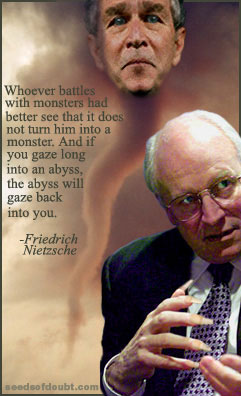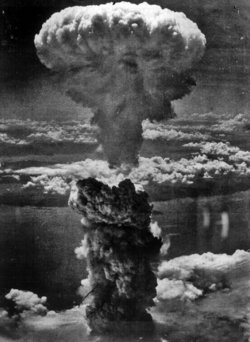U.S. reports discovery of apparent death squad in Iraq
BY LIZ SLY
Chicago Tribune
BAGHDAD, Iraq - The U.S. military has stumbled across the first evidence of a death squad within Iraq's Interior Ministry after the detention last month of 22 men wearing police commando uniforms who were about to shoot a Sunni man, according to the American general overseeing the training of Iraqi police.
The men turned out not to be police commandos but were employed by the Ministry of Interior as highway patrolmen, according to Maj. Gen. Joseph Peterson, who commands the civilian police training teams in Iraq.
"We have found one of the death squads," he said. "They are a part of the police force of Iraq."
Allegations that death squads targeting Sunnis are operating within the Shiite-dominated police forces have been circulating since last May, when the bodies of Sunnis detained by men wearing police uniforms began turning up in garbage dumps and waste ground around Baghdad. Most of the victims had been tortured, and many were shot execution-style.
The killings started after the current Shiite-led government took office and appointed a new interior minister, Bayan Jabr, a leading official in the Iran-backed Supreme Council for the Islamic Revolution in Iraq, fueling suspicions that the ministry's forces were waging a sectarian campaign against Sunnis.
Thousands of Sunnis have since been rounded up by Interior Ministry forces as part of a crackdown against the Sunni-dominated insurgency, according to ministry figures. Sunni political organizations say 1,600 of those detained by men wearing police uniforms have subsequently turned up dead.
But there has been no solid evidence that those killed were detained by real police, and Iraqi officials have frequently said they suspect insurgents, criminals or militias posing as police have been behind the killings, perhaps to fuel the sectarian tensions that have destabilized the country.
The old Republican Guard uniforms resemble those of the new police commandos charged with carrying out counterinsurgency operations, Peterson said, and police uniforms and paraphernalia are readily available in local markets, making it possible for anyone to disguise themselves as police.
Nonetheless, Peterson said, it is likely there are other death squads operating within the security forces. "We continue to believe that there's more of these out there," he said.
In recent weeks there has been another spike in the killings, with the discovery in Baghdad of the corpses of more than two dozen Sunni men, including 14 found in the back of a truck, blindfolded and shot after they had been seized from a mosque by men wearing police uniforms.
Jabr, the interior minister, has appointed committees to investigate the killings, and Peterson said he is convinced the minister has no knowledge of or involvement with any death squads that may be operating within his forces.
"Who are these guys? That's what the minister is trying to find out," he said. "They are discrediting him and his organization. He wants to find these guys. He does not support them."
The discovery of the death squad came about almost by chance, when an Iraqi army checkpoint in northern Baghdad stopped the men in late January and asked what they were doing. They responded truthfully, telling the soldiers that they were taking the Sunni man away to be shot dead.
"The amazing thing is ... they tell you exactly what they're going to do," Peterson said.
Four of the men, believed to be the ringleaders of the group, are being held at the U.S. detention facility at Abu Ghraib, he said, and the 18 others, who were likely just following orders, are in an Iraqi jail. The Sunni man, who is accused of murder, is also in Iraqi custody.
The uniformed men were all subsequently found to be employed by the ministry as highway patrolmen, and investigations suggest the four "instigators" in U.S. custody owed their allegiance to the Badr Organization, the armed wing of the Supreme Council, Peterson said.
Gen. Hussein Ali Kamal, a top official in the Interior Ministry, said a committee has been appointed to investigate the case but it has not yet reached any conclusions. "The minister has appointed a committee to investigate this subject, to find out the truth and to know what happened exactly," he said.
Militia infiltration has become a top concern of the U.S. military as it seeks to speed up the transfer of authority to Iraqi security forces so American troops can start to withdraw. In some parts of the country, members of the Badr Organization, the Kurdish Peshmerga and the Mahdi Army, the militia loyal to rebel cleric Muqtada al-Sadr, openly operate alongside or within the police forces.
Though militia members have been encouraged to join the police and the army, as part of a plan to dismantle militias initiated by the former U.S. administration in Iraq, their presence raises questions about the future loyalties of the security forces.
"It's an issue of loyalties, of allegiance," Peterson said. "If you're still wearing your Badr T-shirt under your uniform, that's a problem."
The U.S. military has been stepping up efforts to monitor the human-rights performance of Iraq's police forces since the discovery of torture victims among prisoners detained at an Interior Ministry facility in the Baghdad neighborhood of Jadriyah last fall.
The U.S. plans to add an extra 2,000 American military advisers to the 1,500 already operating alongside the 152,000-strong Iraqi police force as part of a push to improve the rights awareness of Iraqi police, Peterson said.
About 85,000 members of the current force have undergone U.S. training, a 10-week course that includes 32 hours of human-rights training. By the end of the year U.S. officials intend to have put all 200,000 of the full-strength Iraqi police force through the training course.
But Americans can't monitor all the security force activity, Peterson said. There are currently 38 American teams of 11 advisers embedded with the national police battalions responsible for most counterinsurgency operations, but with each battalion numbering between 500 and 700 men, "we can't watch these guys 24 hours," he said.
LINK






No comments:
Post a Comment